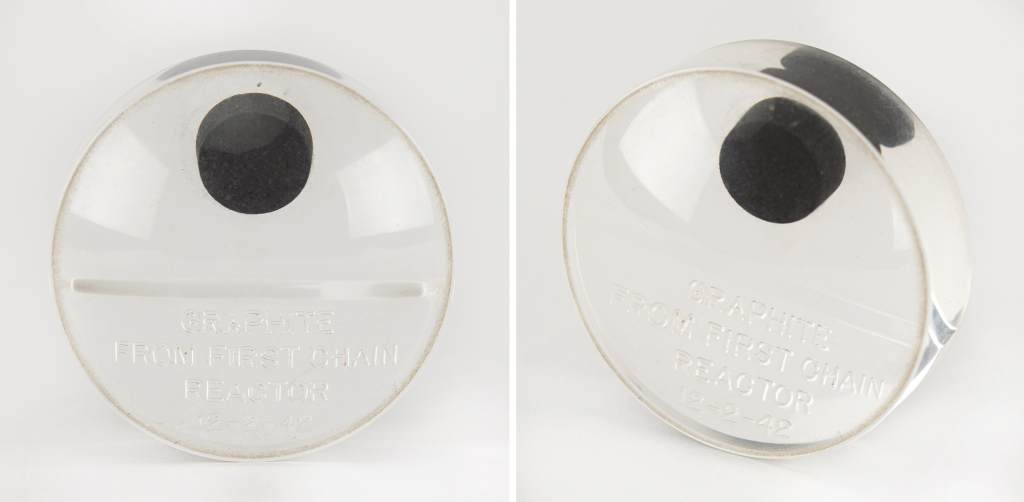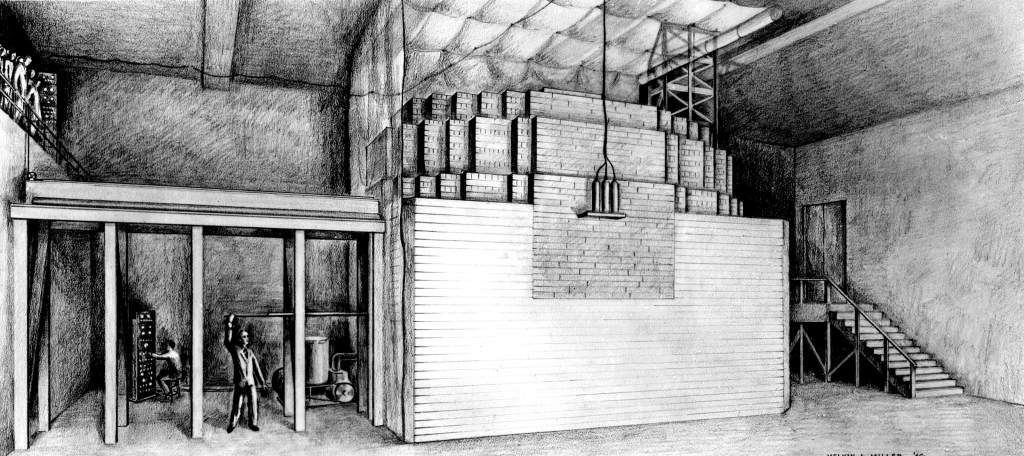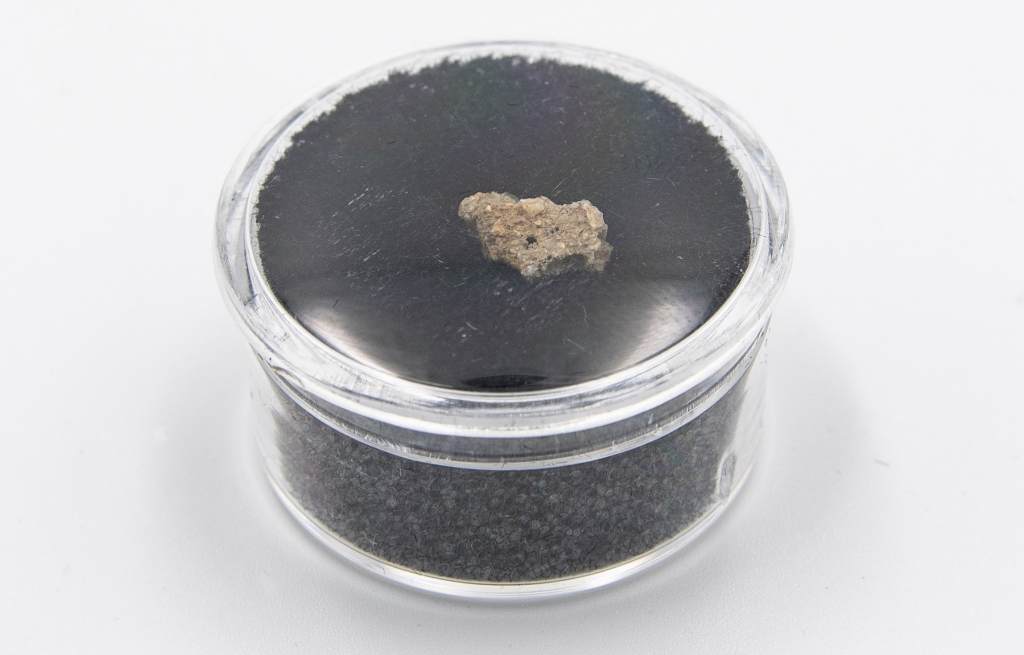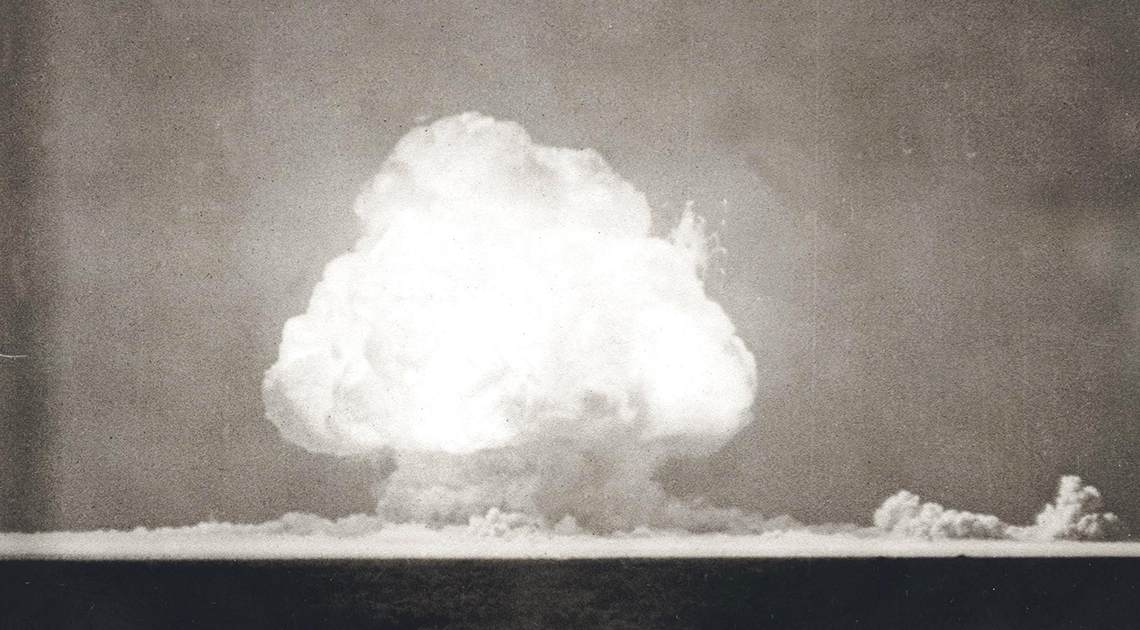Christopher Nolan’s $100-million epic, Oppenheimer, releases in theaters on Friday, July 21. The movie is expected to offer an electrifying portrayal of J. Robert Oppenheimer, the “Father of the Atomic Bomb,” a physicist who was pivotal in developing the first nuclear weapon.
Just in time for the film’s release, Ripley’s recently purchased at auction its very own piece of atomic history: a graphite disc from Chicago Pile-1 — the world’s first artificial nuclear reactor.

New to the Ripley’s Collection: Ultra-pure graphite from Chicago Pile-1, site of the first human-made nuclear chain reaction. Image credit: RR Auction.
Nuclear Chain Reactions: Building Up to Bombs
Before they could make and test the bomb, Oppenheimer and the other Manhattan Project scientists first had to figure out how to create a controlled chain reaction within uranium, splitting the nuclei and releasing monumental amounts of energy. It is from these earlier tests that the latest addition to the Ripley’s Collection originated.
Imagine a row of dominoes — when you tip one over, it triggers a cascading tumble that takes down the whole line. That’s essentially how a nuclear chain reaction works, except that instead of dominoes you’re working with atomic nuclei and the reaction doesn’t cause dominoes to fall but instead produces more and more energy as it moves along.
Chicago Pile-1: The First Ever Nuclear Reactor
Chicago Pile-1, or CP-1, was named for the way it was built. Essentially, CP-1 was a 20-foot-tall, carefully arranged pile of graphite bricks (yes, the same stuff that’s in your pencil) filled with smaller blocks of uranium. It was constructed at the University of Chicago — under the football stands!

Sketch of the world’s first nuclear reactor, Chicago Pile-1 or CP-1, which was constructed under the football grandstands at the University of Chicago. Image credit: U.S. Department of Energy.
On December 2, 1942, in front of a large number of scientists led by physicist Enrico Fermi, CP-1 proved it could produce a self-sustaining nuclear reaction that could be used as a model for large-scale plutonium production — and yes, you guessed it, for building a nuclear bomb.
Today, CP-1 no longer exists in its original form, having been dismantled due to concerns of radioactive contamination.
Ripley’s Atomic Artifacts: Relics from Oppenheimer’s Trinity Test
This isn’t the first Ripley’s has dabbled in nuclear history. Among our collection of wonders, we also hold real pieces of Trinitite, the glassy residue left behind by Oppenheimer’s infamous Trinity test — the first-ever nuclear detonation.

One of several pieces of Trinitite in the Ripley’s collection.
Conducted on July 16, 1945, the Trinity test in Alamogordo, New Mexico, marked the climax of the Manhattan Project. It was the successful detonation of “Gadget,” a massive spherical bomb that exploded with “between 15 and 20 kilotons of force, slightly more than the Little Boy bomb dropped on Hiroshima.”
The extreme heat of the blast melted the desert sand, creating a massive crater of a radioactive greenish, glassy substance known as Trinitite. Until the sale of Trinitite became illegal in 1952, many tourists and collectors visited the site of the explosion to pick up their own pieces!
History Before Your Very Eyes
So, along with viewing Oppenheimer (and possibly Barbie, as well) on the big screen this summer, why not get an even closer view of history with an adventure at Ripley’s?
By Diana Bocco, contributor for Ripleys.com









